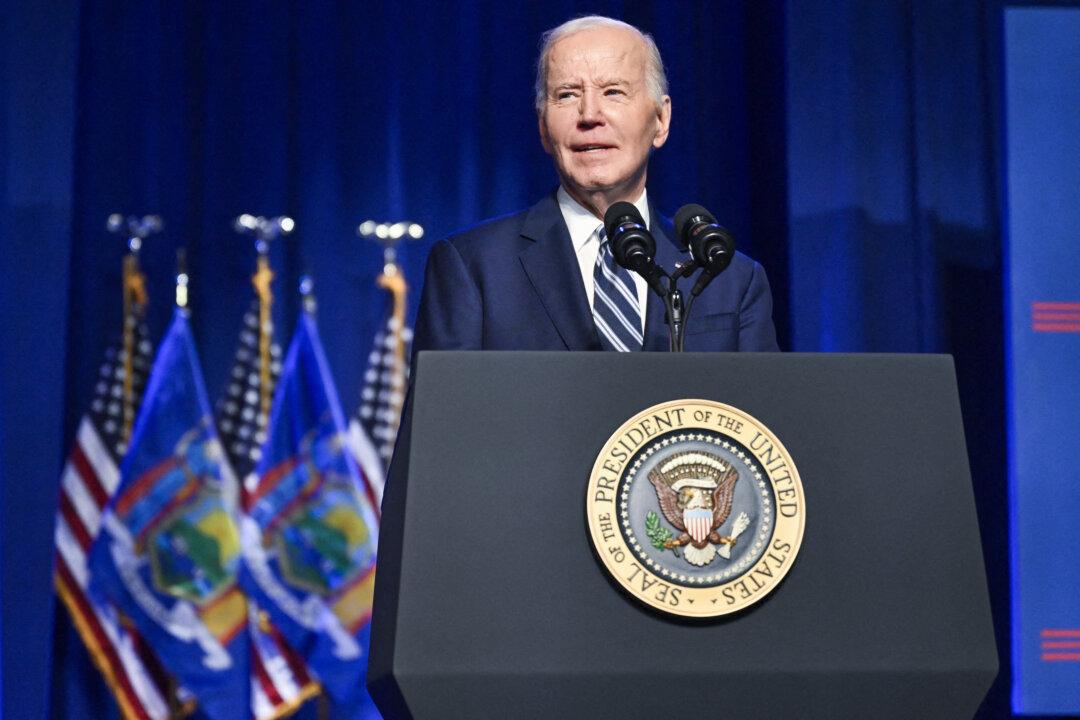WASHINGTON—The Federal Reserve announced that it had left its benchmark federal-funds rate unchanged, after its two-day policy meeting concluded May 1. The central bank signaled more patience ahead.
Fed policymakers gathered on April 30 and May 1 to assess the economic and financial conditions, and decide on monetary policy. As widely predicted, the central bank kept its interest rate target at a range between 2.25 percent and 2.5 percent.
The statement of the Federal Open Market Committee (FOMC) reflected strong economic growth but weak inflation experienced in the first quarter. Fed officials made no changes to the “patient” policy approach.
Information received since March “indicates that the labor market remains strong and that economic activity rose at a solid rate,” said the policy statement.
The statement recognized that inflation measures have declined and are now running “below 2 percent,” the target inflation set by the Fed.
The weak inflation number, however, will not trigger a rate cut, according to Fed Chair Jerome Powell.
“Our policy stance is appropriate at the moment, and we don’t see a strong case for moving in either direction,” he told reporters after the conclusion of the FOMC meeting.
Powell said the inflation fell because low oil prices at the start of the year had worked through the system.
“We suspect that some transitory factors may be at work thus, our baseline view remains that with a strong job market and continued growth, inflation will return to 2 percent over time,” he said.
The Fed chief, however, did not rule out the probability of rate cuts if the core inflation persistently stayed below 2 percent.
“If the inflation were to run persistently below 2 percent or persistently above 2 percent that would be a concern for the committee and the committee would take that into account in making policy,” he explained.
Stocks fell after Powell’s comments dashed hopes of a rate cut.
The Fed also announced a five basis point (0.05 percent) reduction in the interest rate on excess reserves (IOER rate) from the current 2.4 percent to 2.35 percent. The IOER rate gives the Fed an additional tool for the conduct of monetary policy.
Economic Outlook
The outlook for the U.S. economy, according to Powell, is positive and healthy due to strong consumer spending and business investment.In addition, the resolution of the uncertainty around trade negotiations would be positive for business sentiment, he said.
However, “we don’t see any evidence at all of overheating,” he noted.
U.S. gross domestic product rose at a robust 3.2 percent rate in the first quarter of this year, beating market estimates of 2.3 percent. The surprise growth marked the fastest first-quarter pace in four years.
Growth, however, was accompanied by weak inflation. The Fed’s preferred inflation gauge rose 1.55 percent in March year-on-year, well below the central bank’s 2 percent target.
Trump Urges Fed to Cut Rates
Trump repeatedly has criticized the central bank for keeping the rates high. Ahead of the FOMC meeting, he called on the Fed in a series of tweets to cut the interest rates by one percentage point and implement some quantitative easing to stimulate the economy.“China is adding great stimulus to its economy while at the same time keeping interest rates low,” he wrote on April 30. “Our Federal Reserve has incessantly lifted interest rates, even though inflation is very low, and instituted a very big dose of quantitative tightening.”
“We have the potential to go up like a rocket if we did some lowering of rates, like one point, and some quantitative easing,” he continued. “Yes, we are doing very well at 3.2 percent GDP, but with our wonderfully low inflation, we could be setting major records &, at the same time, make our National Debt start to look small!”
The Fed raised interest rates four times in 2018 and nine times since December 2015. In March, the central bank indicated that it likely was done with increases for the rest of this year.
In response to questions about Trump’s comments, Powell said Trump’s pleas did not affect the Fed’s decisions.
“We are a non-political institution,” he said. “We don’t think about short term political considerations we don’t discuss them, and we don’t consider them in making our decisions, one way or the other.”
Interest rates and inflation tend to be inversely correlated. By moving interest rate targets up or down, the Fed aims to keep the economy in balance, achieve maximum employment, and maintain stable prices. The central bank raises interest rates to reduce inflation and cuts rates to spur economic growth.
Stocks collapsed in December last year after the Fed raised its benchmark rates and signaled no backing off from its quantitative tightening. The central bank, however, changed its course this year. In a sharp turn from December’s forecasts, the Fed officials decided to pause their steady campaign of raising rates due to an uncertain outlook for the U.S. and global economy.
Powell said that economic risks around the world have eased, with the improvement in recent data from China and Europe.






Friends Read Free